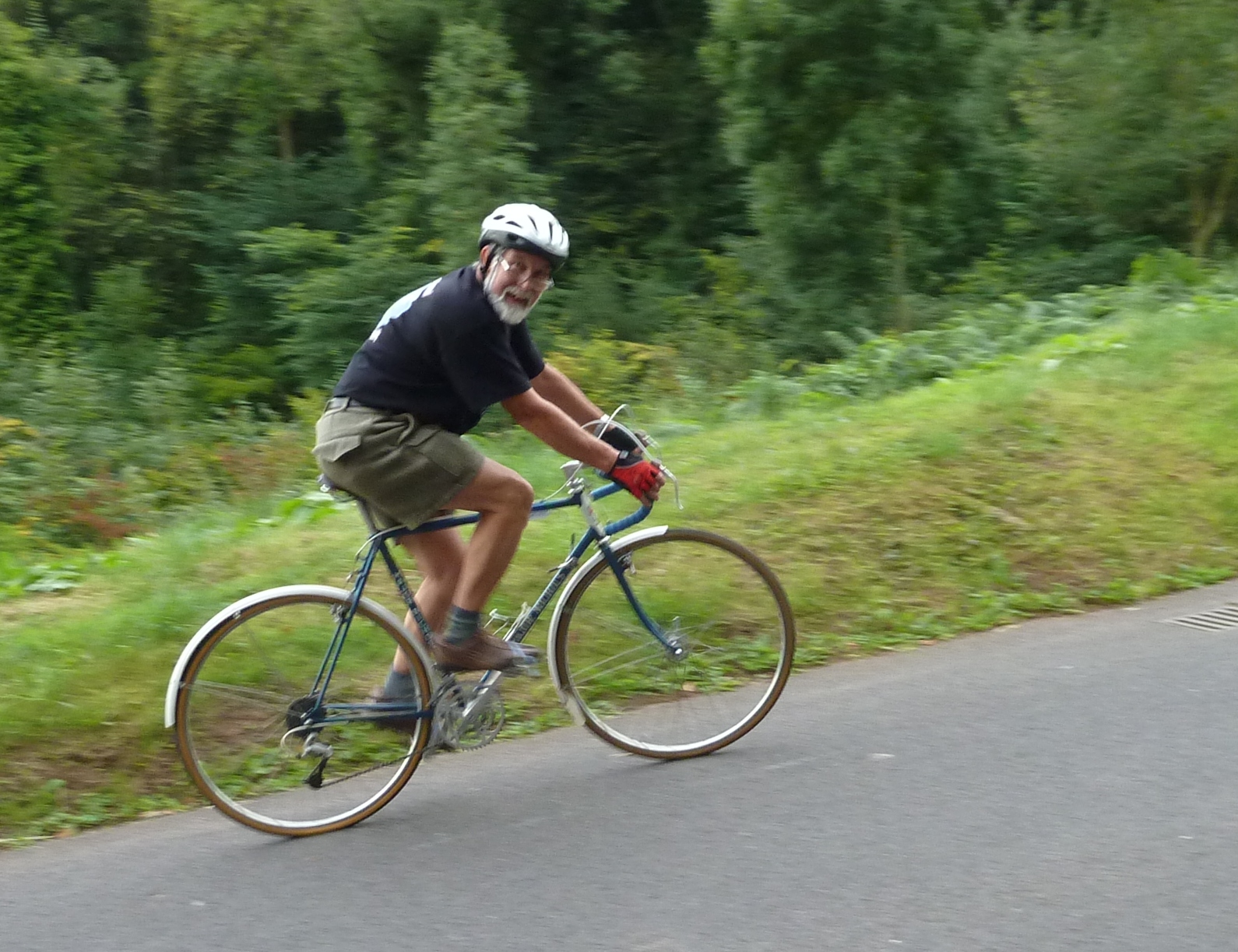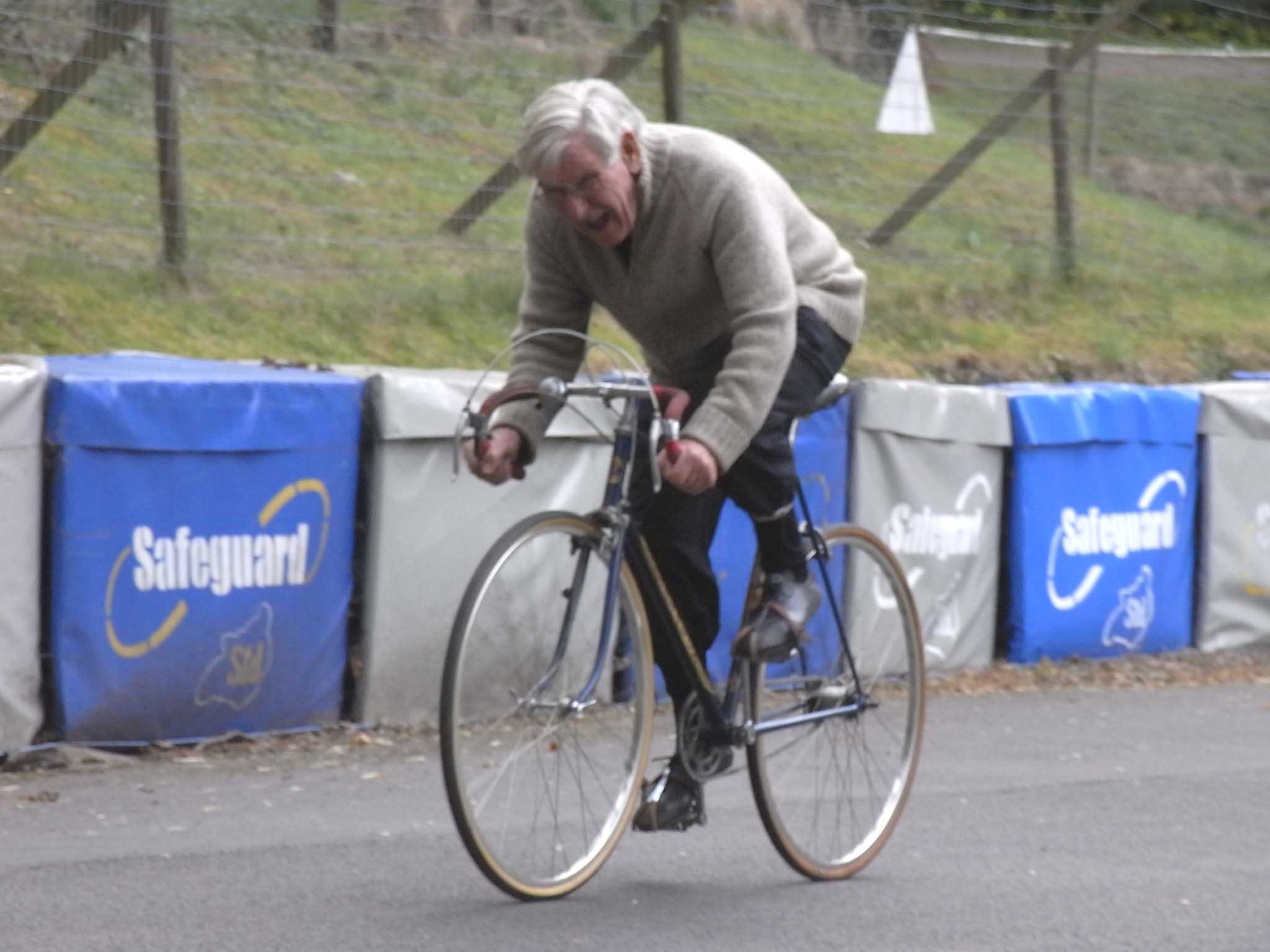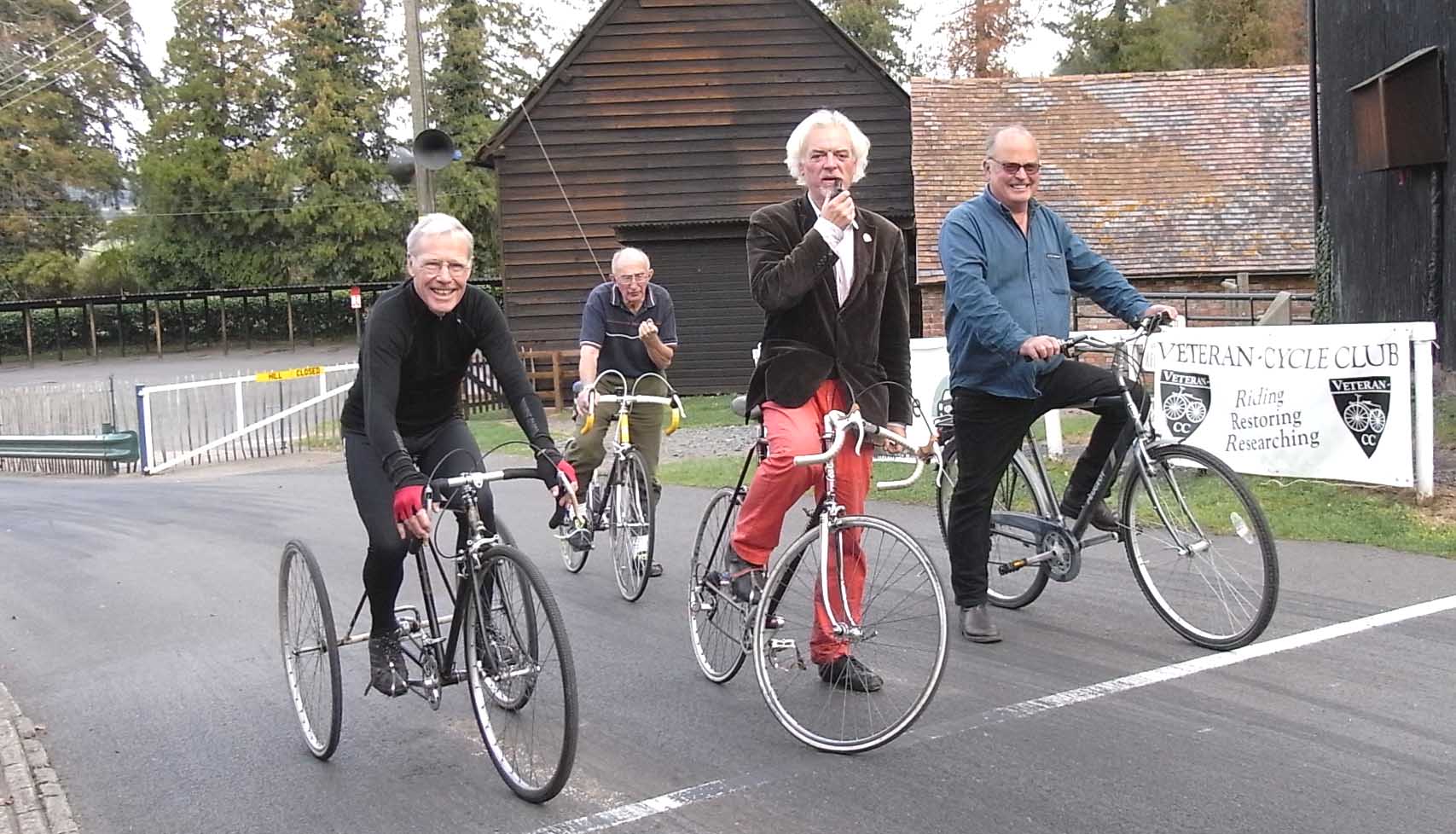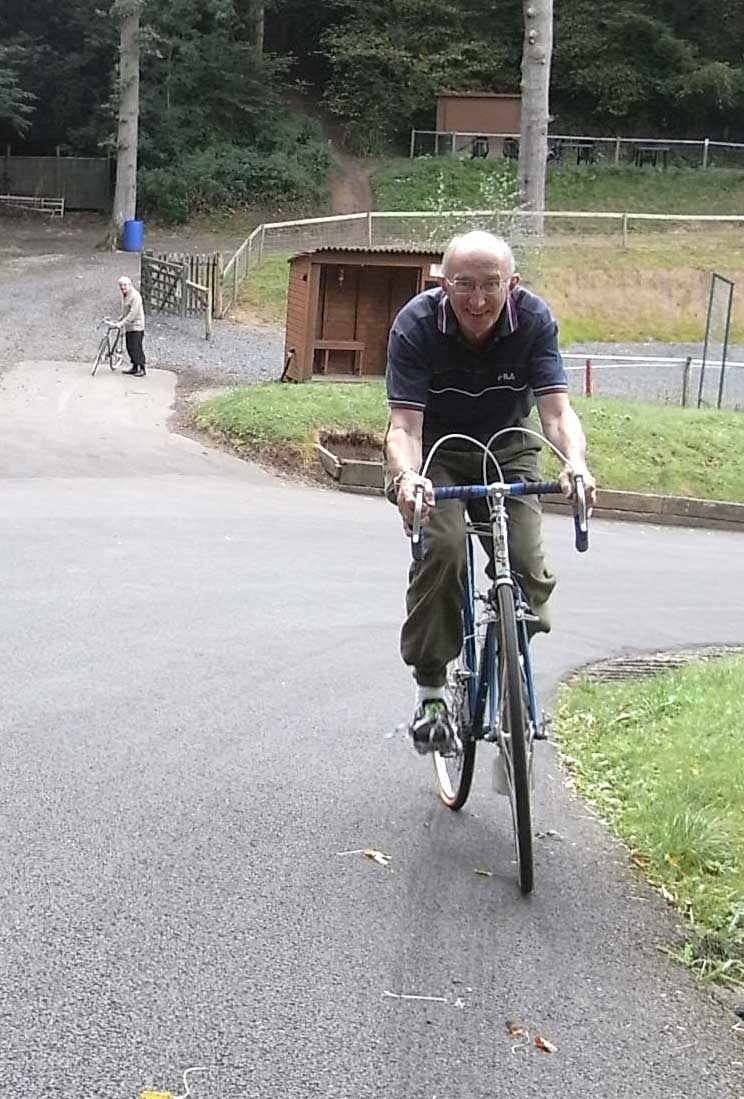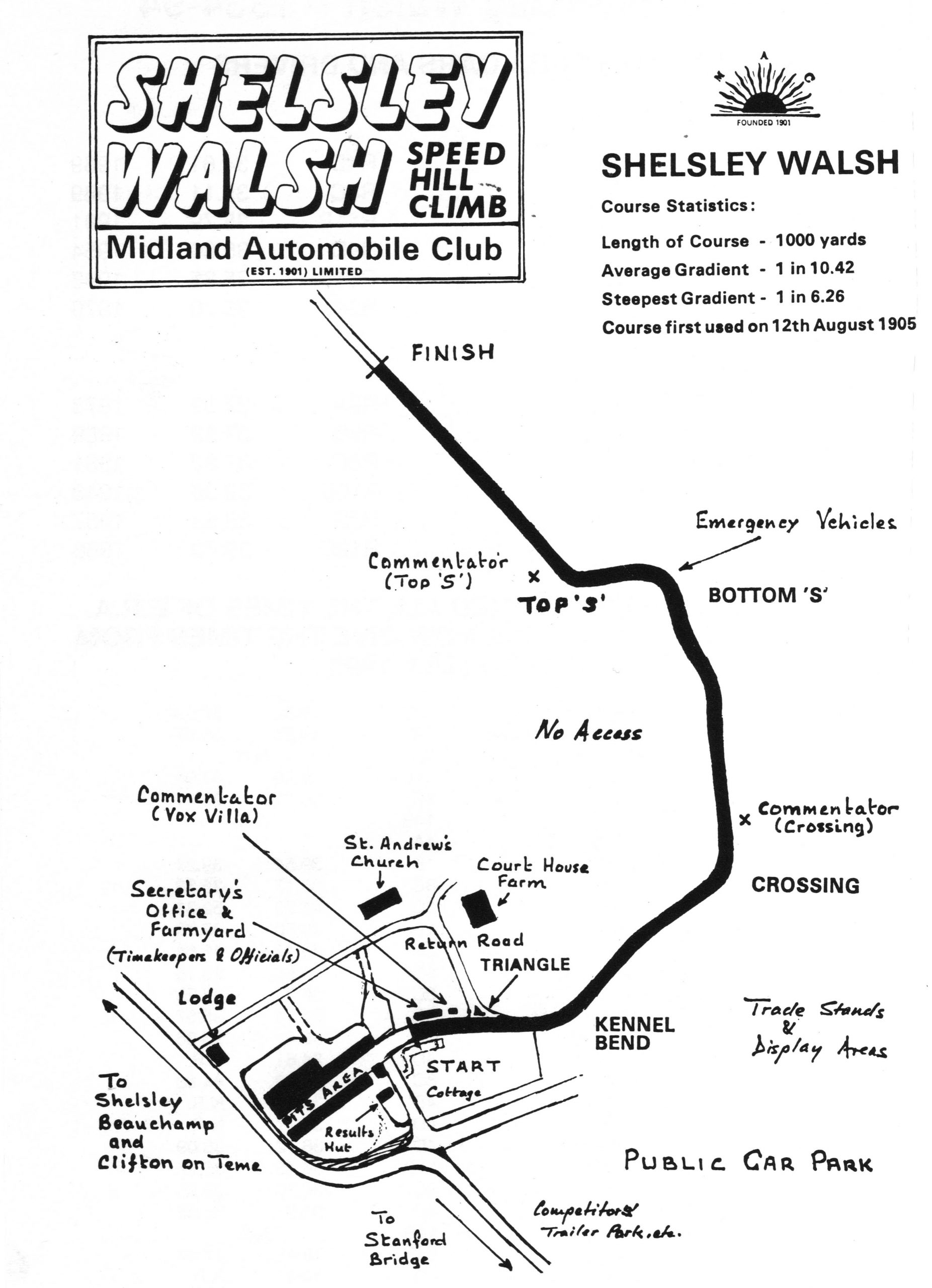Vol. 2, Issue 36 – November / December 2011
Posted: Saturday 12th November 2011
Just before CLN 35 went online we took a long drive down to Somerset to join Peter Lowry for his second annual Hobbs Ride in the Glastonbury area. Patricia has a lovely 1948 Hobbs Superbe with Simplex 10-speed gears and I have a 1951 Hobbs Raceweight which was shod with a particularly nice pair of 26” Conloy rims on Airlite large-flange hubs, double-fixed rear, with 15/17 spokes tied and soldered. Surprisingly for a 1950s frame it was built for 26” wheels, hence the choice of rims.
Just before we left I realised that I had an equally nice pair of Conloy Asp 700 sprint rims on a pair of double-fixed Harden large-flange hubs. At the last moment I decided to switch the wheels but found that the GB brake wouldn’t adjust high enough so I had to substitute a Weinmann 500 stirrup which was shallow enough. Even with this the blocks were just about as high as they could go. The change however made me look on the Hobbs in a new light as the proportions looked much better although the frame still had the slightly longer head tube of the 26”-wheel frame. Fixed was no problem on the Somerset levels in spite of a few ups and downs and we had a good ride. There was a good turnout of 24 classic lightweights including some very good examples of the Hobbs marque.
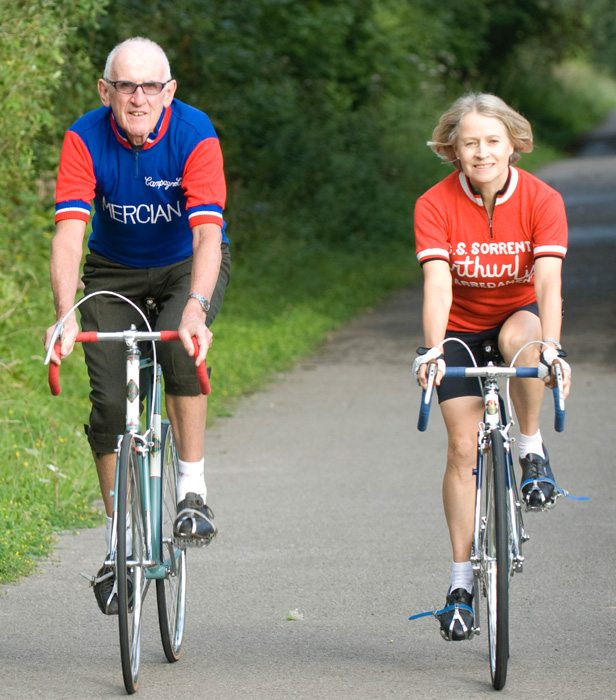
The following weekend we visited the Mildenhall Rally where some of the grass-track riders still use classic steel ‘irons’. Each year though, there are fewer of them as carbon becomes the material of choice.
We held the Ephgrave Ride here in September and numbers were down a bit this year. I think the steep increase in travel costs thanks to escalating fuel prices may have been partly to blame along with the terrible weather forecast for the weekend. Come the day the ride was held in dry sunny conditions but with a brisk wind. I had planned to do the rather hilly ride on my fixed Ephgrave road/path, having tried it out on some of the steeper hills and put an extra tooth on the rear sprocket. In view of the weather forecast I decided to fit white Bluemels mudguards on my geared Ephgrave for the first time ever. I was pleasantly surprised at the look of it when done so they have stayed on for now as winter is looming.
In October we went to London for the Hell’s Belles International Women’s bicycle polo tournament and marvelled at the way the game has progressed over the years with its new-found popularity. From time to time I get to ride on a polo bike at the Cambridge court and the responsiveness is amazing, due in part to the low gears used which gives startling acceleration. One day when no-one is looking I may take a mallet and have a go at hitting a ball for the first time – could lead to the forming of the Pensioners’ Polo Team as we wave our bus passes angrily at the opposition.
The overall look of a classic bike always interests me in the way they stand out in a crowd. One day I was leaving Patricia’s place of work and in one of the two full bike parks there were about a hundred bikes of different styles. About three-quarters of the way down something caught my eye and on examining I realised it was a Gillott Tapertube although there was no way of telling it from the initial distance. What had attracted my attention was that delicate set of proportions the classic has, part frame angles and dimensions and part build of components. However, I do see a lot of classics these days which are set up in a way no owner would have done in the 1950’s say – I think it has a lot to do with waistlines! One problem we have with visitors to Cambridge is that they always want to stop to look at bikes hoping to find that elusive treasure. As there are tens of thousands of bikes all over the city it makes for slow progress from A to B.
The website is a fantastic source of info, many thanks for it. I have just been reading the Johnny Berry section and it reminded me of something Frank Herety told me many years ago. If I remember correctly, Frank used to work for Johnny years before and learnt his skills as a frame builder from him. Frank also continued to use C & G finishes in Liverpool and used the same lug detailing and paint touches such as the seat stay cap lines. My own Frank Herety bike was one of the last he made and has the same detailing as seen on Johnny’s frames. Frank was desperately trying to stop making frames during the early 90’s due to lung problems from inhaling brazing fumes etc and would only make one when in the mood.
I asked for years with no success until one day he phoned me and said “do you still want one of my frames?” I was at his shop for measuring up before the phone rested back on the hook. Frank also made frames for Ribble (look for the frame #, if it has FH stamped on it, then it’s one of Frank’s, it’ll probably have internal cable guides too). He also made excellent wheels that didn’t need a service to re-tension the spokes because Frank had a way of stress relieving them and then re-setting the correct tension before you were given them to ride. Both men very skilled in many ways. once again thanks for the informative site. Regards Dave Strong
I would like to get hold of a photograph, or a scan, of Vic Clark taking part in the National Hill Climbs of 1946, 47 or 48. He won all three on a Pollard with the seat stays shot into the seat tube several inches below the seat cluster. They did not carry on beyond the seat tube to the top tube in what is known as the ‘Hellenic’ style. This cycle has just been found in a sad state and the new owner is planning to restore it to its former glory. He doesn’t need the photograph for this but I think it would be rewarding to have a shot of this innovative bike in action to add to the entry in Classic Builders (Pollard) on the website.
Veteran-Cycle Club goes visiting by Alvin Smith
As part of the Hereford Section’s autumn celebrations a series of not too serious hill climbs has been become popular with a certain group within the Section. This year for the second time running we have been able to disport ourselves on truly historic hill climb territory, namely the oldest motoring hill climb venue of them all, the wonderfully scenic Shelsey Walsh in rural Worcester. Many thanks for allowing us to visit and ride the hill must be offered to the Midland Automobile Club who have run meetings at this venue since 1905. Last year we visited the hill for the first time but rain blighted our fun and though we all enjoyed the experience there were no photographic records of that visit in which just three made clean climbs, the others having at least one –and some many more – touches!
Just to talk you up the course may be of interest. The Start next to the old barn slopes already, so a holder up or a pair of them for roadster bikes is essential.
Better be in second or third lowest for a smart take-off to give the other competitors the shivers. After 30 yards the road passes the commentary box and steepens and as Kennel Bend opens up and the lower hill comes into sight, my! What a job you’ve got! Dig in, maybe drop a gear now and grind another 150 yards to where Crossing bend rises into a mean sneaky slope which cars take in third – but not a cyclist!
Dancing on the pedals or running diagonally side to side is in the order of the day until a slight respite as the second commentary box is passed, after which serious attention allows one to slowly creep towards the lower of the two Esses. At the Esses reconcile yourself to 120 yards of soaring zig-zags with (in theory) a choice of assaulting the corners at their sharpest points or contouring round the outside of the curves where the gradients are less.
Then somehow the second of the Esses is surmounted; and the final straight appears.
The Esses over, like an arrow you can dart the last 150 yards to the line, or you can just hold on to that gear and survive! We take from just over 5 minutes to about 12 minutes though the current car record is 36 seconds when using over 600 horses.
Entrants for 2011
As you see in the list below a wide range of machines were in use!
| David Lee | Peugeot | 2005 |
| Robin Walker | Alan Carbonio | 1992 |
| Steve Kay | Dursley Pedersen replica | 1990 |
| Tim Harris | Major Nichols Harris Special | 1980s |
| Eleanor Kimberley | Peugeot | 1985 |
| Jim Churton | John Thompson | 1984 |
| Alvin Smith | Major Nichols Tourist | 1983 |
| Lawrence Meredith | Harry Quinn | 1970 |
| Paul Naumann | Hetchins MB | 1959 |
| Isobel Naumann | F H Scott | 195? |
| Roger Alma | Higgins Trike | 1950 |
| David Filsell | Raleigh (definitely) All Steel | 1994 |
| David Lovegrove | Paragon | 1939 |
At the end of WWII thousands of men returned to the UK to be demobbed from the armed forces as and when the War Office saw fit. Quite a percentage of them had been cyclists pre-war and were eager to get back into the world of competitive cycling and to enjoy the famous camaraderie of the clubs they had left. Demobbed servicemen were presented with a demob suit, trilby hat and such back pay as they had accrued during their service in hostilities here and abroad.
What had changed was the state of the country, forced into austerity measures by the need to pay back large debts to the USA. One way out of this was to export as many goods as possible and this resulted in a staggering lack of materials for home production.
As far as the racing scene went, things carried on in the same manner as before but tempered by this austerity. Track racing took part again, both as locally organised events, sometimes alongside athletics events and other events such as horse shows. During the war these programmes had been organised in city parks and similar venues as part of a national ‘Holidays at Home’ scheme.
Time trialling started again from where it had left off in 1939, which is not surprising as some time trials had been held with reduced numbers during the war. Perhaps it was no coincidence that the insistence upon black Alpaca jackets was lifted as clothing was only obtainable upon production of scarce and valuable tickets from a clothing ration book. Things were so bad that food rations were reduced even from war-time levels. Had the natives toed the line and voted for Churchill the debt would have been reduced but having the temerity to vote for Attlee resulted in punishment by being made to pay back the entire amount owed as a result of fighting for democracy!
There was a dilemma for the cycle trade as many men wanted to spend some of their ‘windfall’ on a shiny new bike – sadly just at a time when builders had to scrimp and save with materials, hence such practices as bending pre-war lugs into the more fashionable steeper angles used post-war. Some builders, such as Carpenter, publicly distanced themselves from such actions: maybe their allocation of materials matched their requirements or perhaps they were just determined to keep to the high standards they were known for.
Some makers produced catalogues with machine specifications but with the proviso that such specifications were subject to change. It is this state of flux which confuses some collectors when they find a frame with some non-specific feature. Builders had to carry on production to make a living and if a certain make of lug or fork crown say became impossible to source then whatever could be found would be utilised just to keep on earning. There was a particular shortage of lugs and many builders tried their hardest to convince buyers that a brazed/welded frame was as good, if not better, than the favoured lugged frames. Many builders submitted frames for testing and printed reports detailing how strong and resilient they were.
It was an uphill battle though as most buyers preferred to wait for the frame of their choice. The welded frames were slightly cheaper but not everyone bought them for this reason as, from time to time, such a frame will surface with a very expensive chrome/paintwork finish that would have cancelled out the cost-saving.
Mick Madgett has a customer’s bike for sale on behalf of its (original) owner; it is a 21″ ‘Stephens’, ultra short wheelbase with split seat tube. 26 x 1¼” steel wheels, fixed, with Williams C/set, Brooks Sprinter saddle, ‘Bailey’ style H/bars, Strata brake (on rear), Bluemels alloy guards & Chossy saddlebag.”
If it was my size I would have snatched it up in spite of having no storage space at all. One day I really must trim down the collection by a few bikes as we are at bursting point. Not being a great fan of Ebay or even more so of boxing up bikes for transport I never seem too get round to it. We are very fond of all our bikes and they are like family to us so the idea of selling them on Ebay is akin to flogging the kids to the highest bidder without caring what they intended to do with them when purchased. ………….Peter
Posted: Saturday 12th November 2011
This article appears in the following categories.
Upcoming Events
Whether you are looking for a gentle social meet up, or a 100-mile ride browse the community’s upcoming events and plan your next weekend outing.

